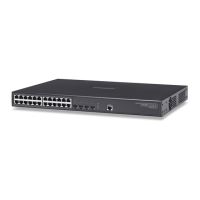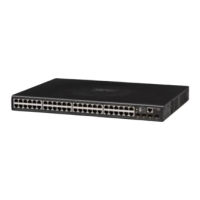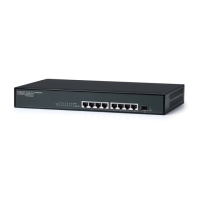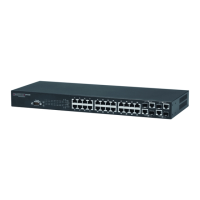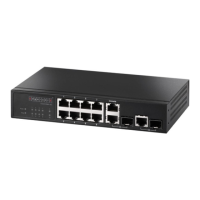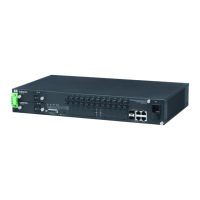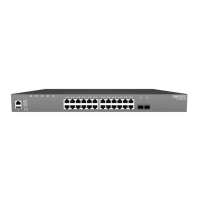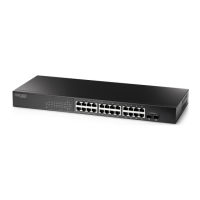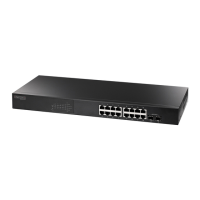System Management Commands
4-15
4
Command Mode
Normal Exec, Privileged Exec
Command Usage
The quit and exit commands can both exit the configuration program.
Example
This example shows how to quit a CLI session:
System Management Commands
These commands are used to control system logs, passwords, user names, browser
configuration options, and display or configure a variety of other system information.
Device Designation Commands
This section describes commands used to configure information that uniquely
identifies the switch.
Console#quit
Press ENTER to start session
User Access Verification
Username:
Table 4-6 System Management Commands
Command Group Function Page
Device Designation Configures information that uniquely identifies this switch 4-15
System Status Displays system configuration, active managers, and version information 4-16
Frame Size Enables support for jumbo frames 4-22
File Management Manages code image or switch configuration files 4-23
Line Sets communication parameters for the serial port, including baud rate and
console time-out
4-29
Event Logging Controls logging of error messages 4-39
SMTP Alerts Configures SMTP email alerts 4-45
Time (System Clock) Sets the system clock automatically via NTP/SNTP server or manually 4-48
Switch Clustering Configures management of multiple devices via a single IP address 4-53
UPnP Sets Universal Plug-and-Play parameters used to advertise the switch 4-58
Table 4-7 Device Designation Commands
Command Function Mode Page
hostname Specifies the host name for the switch GC 4-16
snmp-server contact Sets the system contact string GC 4-63
snmp-server location Sets the system location string GC 4-64

